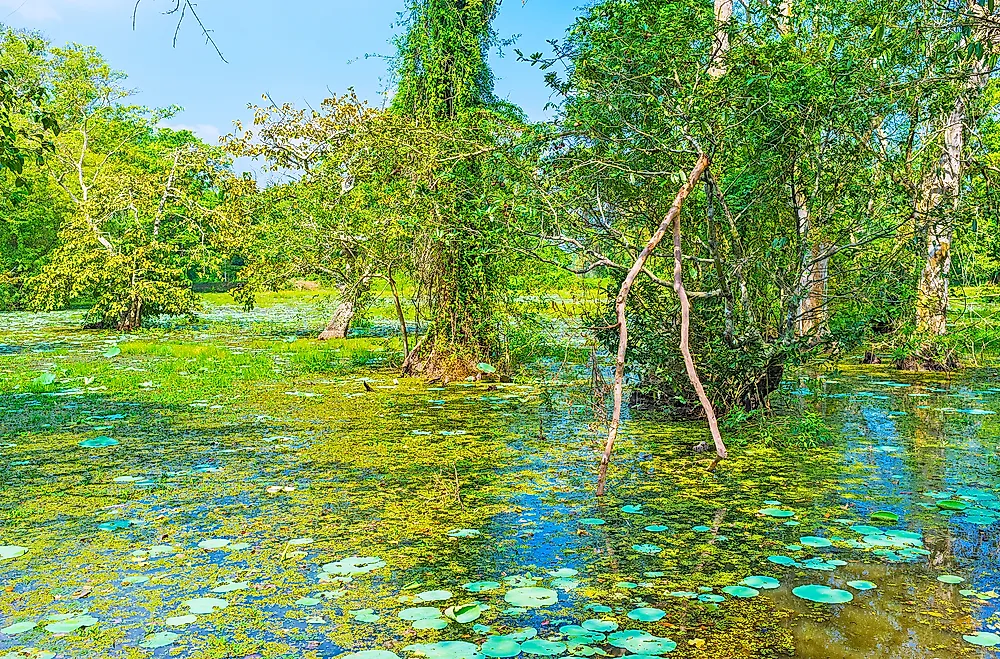Freshwater Swamp Forests – Forest Types Around the World

What Is A Freshwater Swamp Forest?
A freshwater swamp forest is defined as a forest that is full (inundated) of mineral-rich water (freshwater) either as a permanent, irregular or a seasonal condition. These forests are mainly found on the lower parts of a river or freshwater lakes in many different regions having a wide range of climate types. These include the northern areas which have a subarctic climate, tropical, subtropical, and temperate regions. They are different from peat swamp forests mainly because they do not have a thick layer of peat which is present in peat swamp forests due to lack of decomposition.
Freshwater swamp forests have multiple sources of water which include rivers, rain, and water from the ground. The waters' color in freshwater swamp forests can also differ depending on the number of plant materials found in the soil and water.
Freshwater swamp forests are usually endemic to the areas of Southeast Asia, South America, Africa and the Amazon where the most significant part of these forests occur. In Southeast Asia, the woods are found closer to large rivers like the Mekong, Irrawaddy, and Chao Phraya. Others, however, can be located near small streams.
These types of forests are mostly limited to alluvial soils carried by floods to the plains prevalent on a mangroves’ forest landward side or areas with a shallow water table. Freshwater swamp forest, even though they are native to regions with a wet climate, they are also present in other areas like East Java and New Guinea which are dry seasonally.
Features
The aquatic flora present in these forests is primarily dependent on the nutrients in the water. Compared to forests on dry land, these swamp forests have few varieties of plants. Due to this, they are mostly full of one type or just a few species of trees. Thin peat, however, may be found on these forests contingent on the amount of water present in the forest due to the low rate of decomposition. This limited decomposition is caused by the presence of high amounts of phenolic compounds found in leaves which is sometimes thrice the amount in temperate forests. This means that decay occurs in anoxic conditions which in turn produces humid acid thus reducing the water pH. As a result, it makes trees acquires specific features like pneumatophores due to anaerobic conditions also caused by the frequent flooding, buttress roots, and lenticellate barks for stability and gas distribution respectively.
In fauna, freshwater swamp forests are just as diverse as dryland forests even though the research in this area is insufficient. They are known to be homes to numerous infrequent, endangered, and specialized species with 33% of birds and 45% of mammals in these forests having a status of either threatened or endangered on the IUCN Red List.
Threats
These forests are areas of global importance. They regulate the floods, maintain water quality, and conserve wetlands which include both flora and fauna. Despite their importance in preserving biodiversity, these forests are under threats. In many places, they face encroachment from people who seek to exploit their rich soils for agriculture. Their importance is also not well known which means that they are not being conserved as well as they should be. This can be seen in the Sumatran freshwater swamp forests and the Niger Delta freshwater swamp ecosystem.











